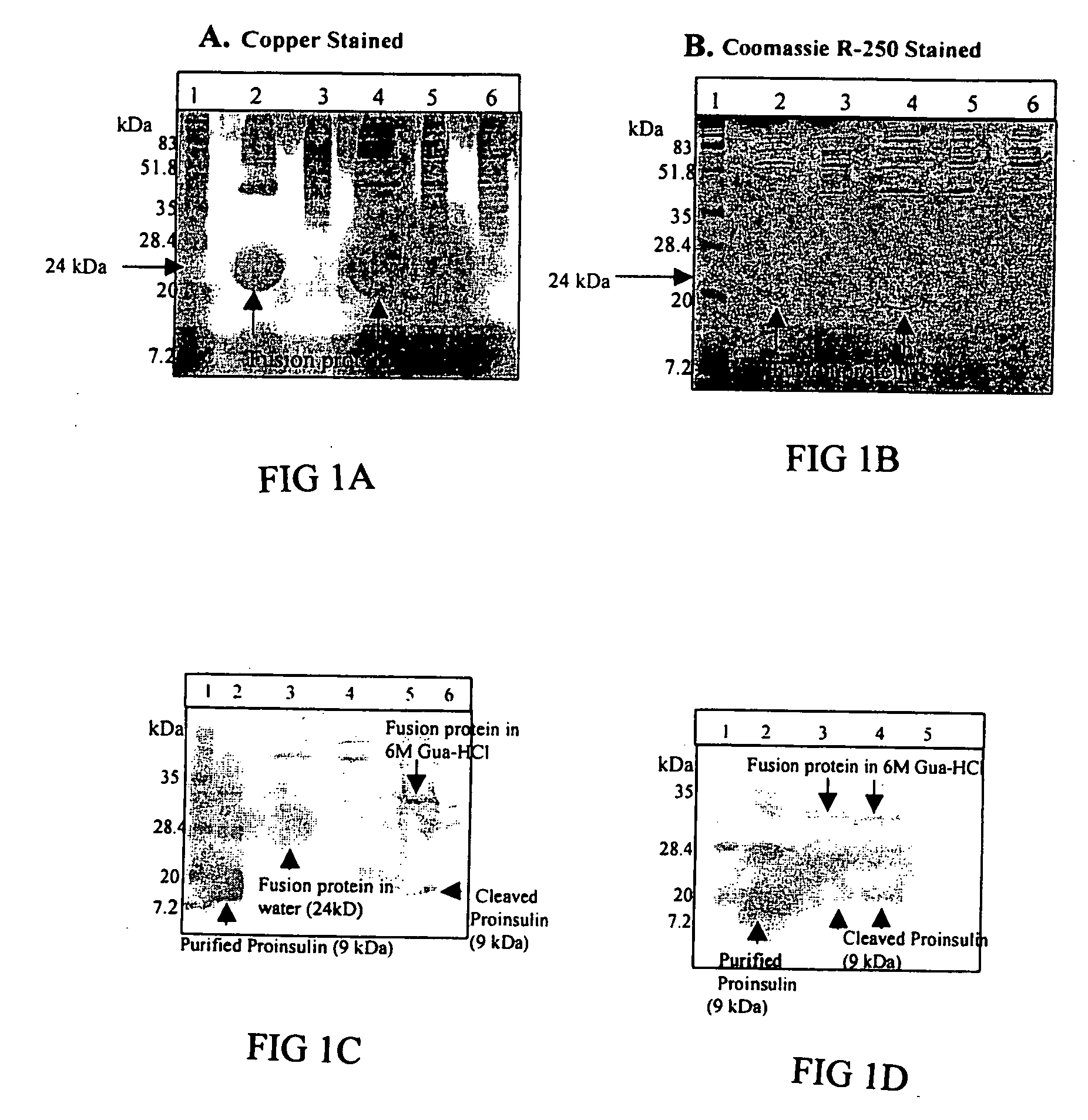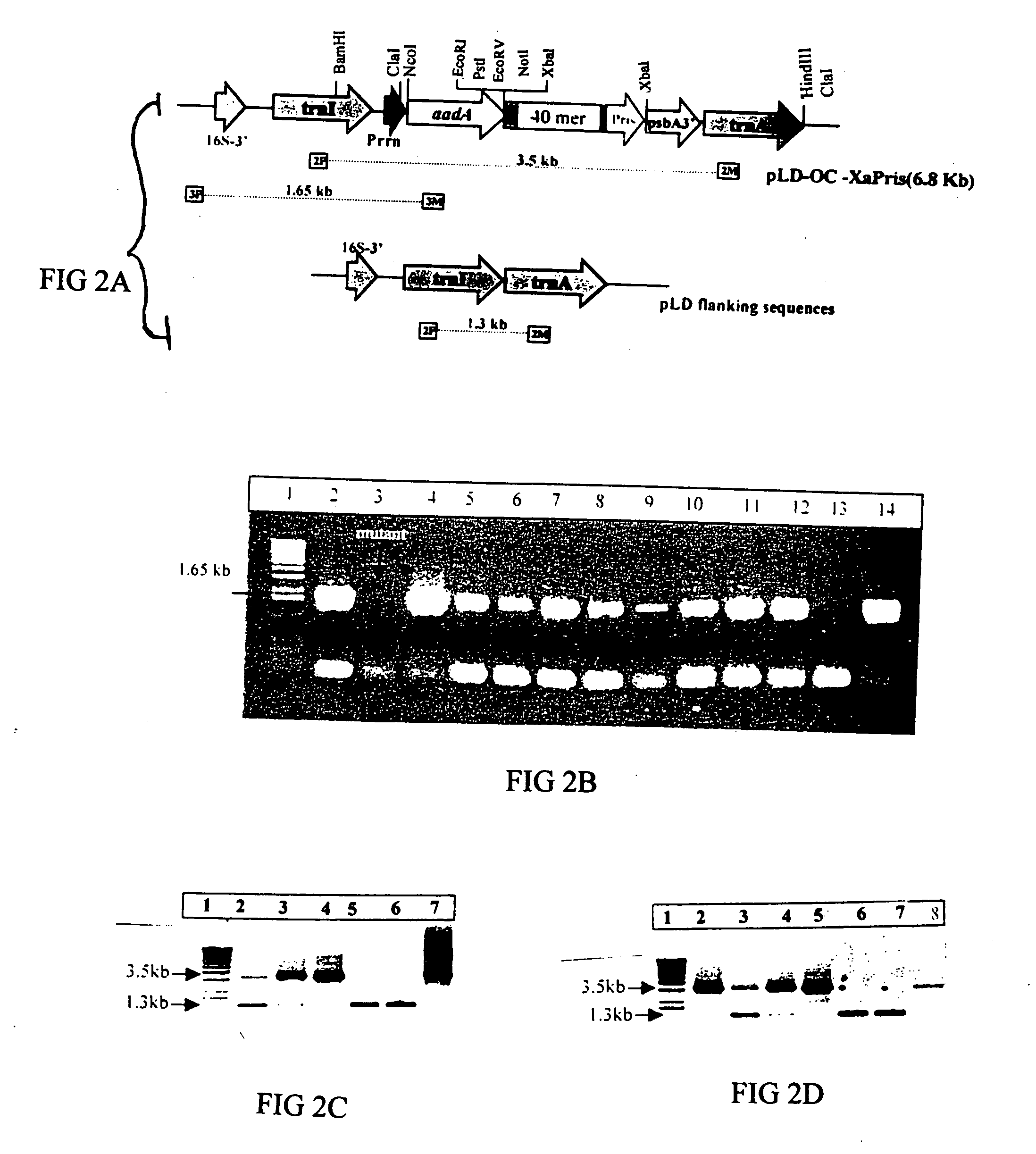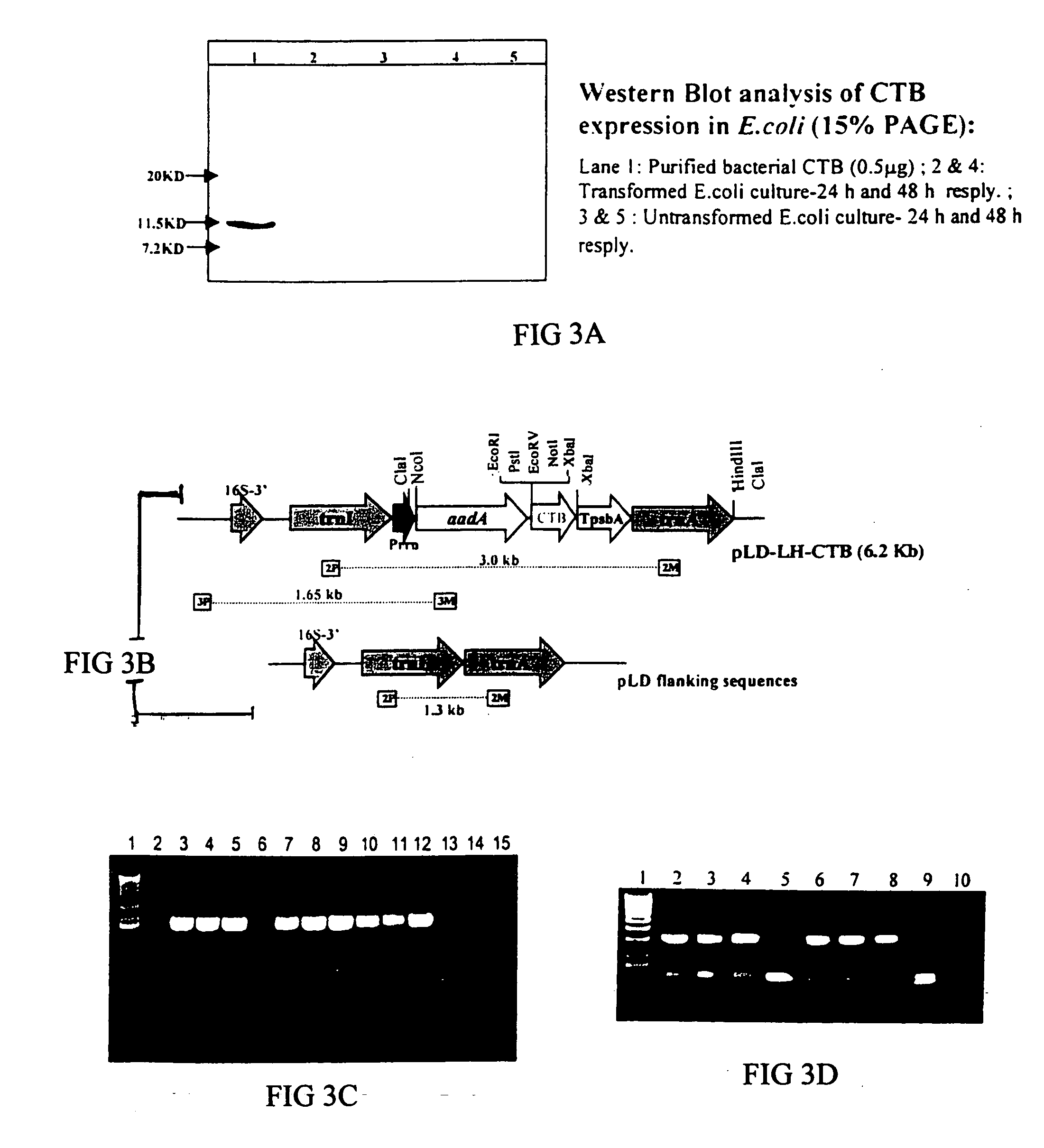Pharmaceutical proteins, human therapeutics, human serum albumin insulin, native cholera toxic B submitted on transgenic plastids
a technology of transgenic plastids and pharmaceutical proteins, which is applied in the field of pharmaceutical proteins, human therapeutics, human serum albumin insulin, and native cholera toxic b submitted on transgenic plastids, can solve the problems of high cost of production via fermentation, low level of foreign protein expression limitation in the production of pharmaceutical proteins in plants, and high cost of carbon source co-substances as well as maintenance, etc., to eliminate the need for expensive post-purification processing and reduce the effect of high valu
- Summary
- Abstract
- Description
- Claims
- Application Information
AI Technical Summary
Benefits of technology
Problems solved by technology
Method used
Image
Examples
example 1
Evaluation of Chloroplast Gene Expression
[0218] A systematic approach is used to identify and overcome potential limitations of foreign gene expression in chloroplasts of transgenic plants. This experiment increases the utility of chloroplast transformation system by scientists interested in expressing other foreign proteins. Therefore, it is important to systematically analyze transcription, RNA abundance, RNA stability, rate of protein synthesis and degradation, proper folding and biological activity. The rate of transcription of the introduced HSA gene is compared with the highly expressing endogenous chloroplast genes (rbcL, psbA, 16S rRNA), using run on transcription assays to determine if the 16SrRNA promoter is operating as expected. The transcription efficiency of transgenic chloroplast containing each of the three constructs with different 5′ regions is tested. Similarly, transgene RNA levels are monitored by northerns, dot blots and primer extension relative to endogenou...
example 2
Expression of the Mature Protein
[0219] HSA, Interferon and IGF-I are pre-proteins that need to be cleaved to secrete mature proteins. The codon for translation initiation is in the presequence. In chloroplasts, the necessity of expressing the mature protein forces introduction of this additional amino acid in coding sequences. In order to optimize expression levels, we first subclone the sequence of the mature proteins beginning with an ATG. Subsequent immunological assays in mice demonstrates the extra-methionine causes immunogenic response and low bioactivity. Alternatively, systems may also produce the mature protein. These systems can include the synthesis of a protein fused to a peptide that is cleaved intracellulary (processed) by chloroplast enzymes or the use of chemical or enzymatic cleavage after partial purification of proteins from plant cells.
Use of Peptides that are Cleaved in Chloroplast
[0220] Staub et al. (9) reported chloroplast expression of human somatotropin...
example 3
Use of Chemical or Enzymatic Cleavage
[0221] The strategy of fusing a protein to a tag with affinity for a certain ligand has been used extensively for more than a decade to enable affinity purification of recombinant products (118-120). A vast number of cleavage methods, both chemical and enzymatic, have been investigated for this purpose (120). Chemical cleavage methods have low specificity and the relatively harsh cleavage conditions can result in chemical modifications of the released products (120). Some of the enzymatic methods offer significantly higher cleavage specificities together with high efficiency, e. g. H64A subtilisin, IgA protease and factor Xa (119, 120), but these enzymes have the drawback of being quite expensive.
[0222] Trypsin, which cleaves C-terminal of basic amino-acid residues, has been used for a long time to cleave fusion proteins (14, 121). Despite expected low specificity, trypsin has been shown to be useful for specific cleavage of fusion proteins, l...
PUM
| Property | Measurement | Unit |
|---|---|---|
| pH | aaaaa | aaaaa |
| pH | aaaaa | aaaaa |
| concentration | aaaaa | aaaaa |
Abstract
Description
Claims
Application Information
 Login to View More
Login to View More - R&D
- Intellectual Property
- Life Sciences
- Materials
- Tech Scout
- Unparalleled Data Quality
- Higher Quality Content
- 60% Fewer Hallucinations
Browse by: Latest US Patents, China's latest patents, Technical Efficacy Thesaurus, Application Domain, Technology Topic, Popular Technical Reports.
© 2025 PatSnap. All rights reserved.Legal|Privacy policy|Modern Slavery Act Transparency Statement|Sitemap|About US| Contact US: help@patsnap.com



